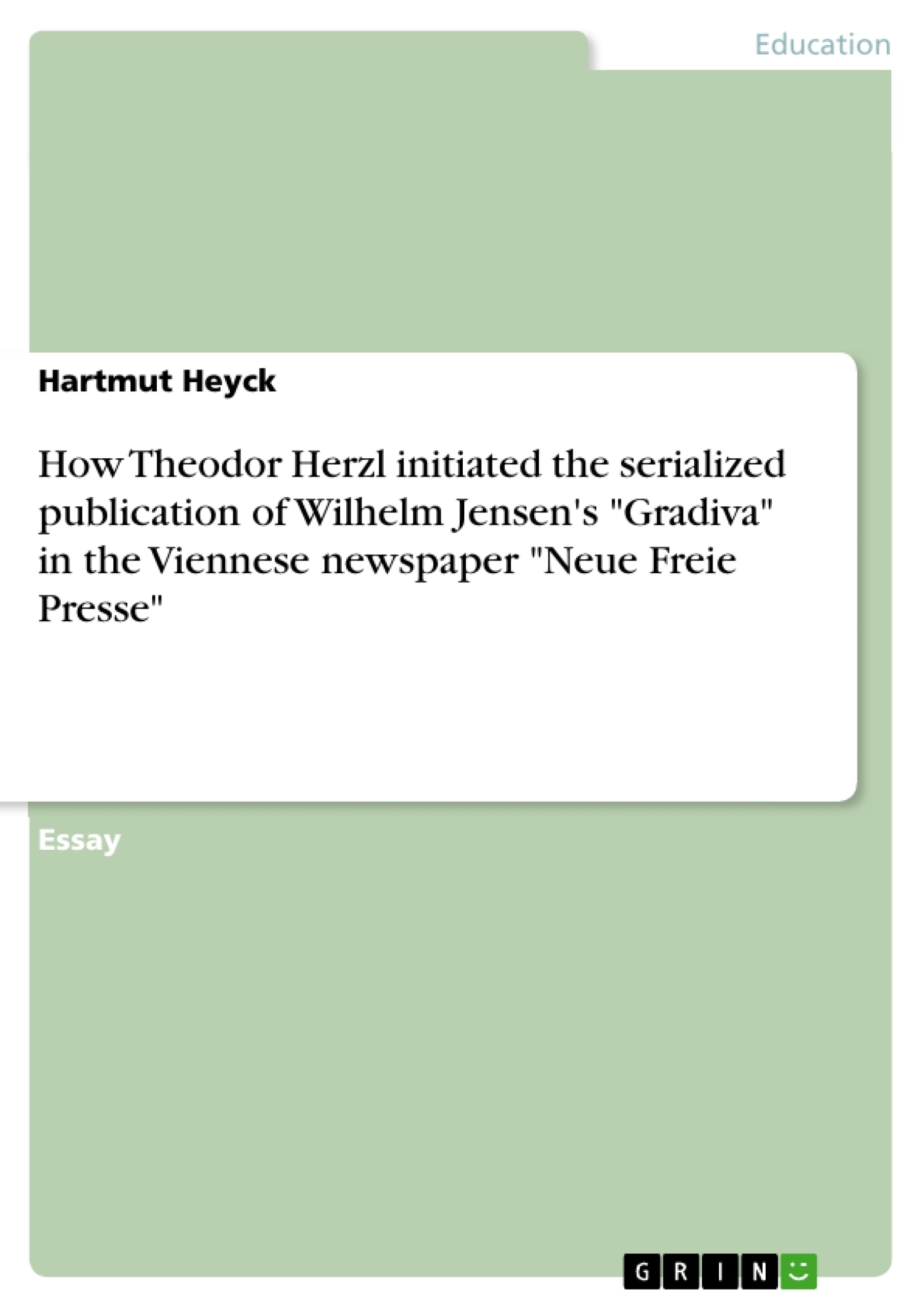This paper details how Theodor Herzl initiated the serialized publication of Wilhelm Jensen's "Pompeian fantasy" GRADIVA in the Viennese Newspaper NEUE FREIE PRESSE in June/July 1902. This "gothic" novel, published in book form in 1903, came to the attention of Sigmund Freud who famously analysed it in his "Delusion and Dream in Wilhelm Jensen's GRADIVA" (1907).
Inhaltsverzeichnis (Table of Contents)
- Theodor Herzl, Wilhelm Stekel, and Wilhelm Jensen's Gradiva
- How Theodor Herzl initiated the serialized publication in June/July 1902 of Wilhelm Jensen's “Pompeian fantasy” Gradiva in the Viennese newspaper Neue Freie Presse
Zielsetzung und Themenschwerpunkte (Objectives and Key Themes)
This article explores the circumstances surrounding the publication of Wilhelm Jensen's novel, Gradiva, in the Viennese newspaper Neue Freie Presse in 1902. It examines Theodor Herzl's role in initiating the serialization and analyzes the relationship between Herzl, Jensen, and the newspaper's editorial board.
- Theodor Herzl's admiration for Wilhelm Jensen's work
- The process of Herzl's communication with Jensen regarding the publication of Gradiva
- The editorial decisions made by the Neue Freie Presse regarding the serialization
- The significance of Gradiva's appearance in the newspaper, considering its later analysis by Sigmund Freud
- The potential influence of Herzl on the text of Gradiva
Zusammenfassung der Kapitel (Chapter Summaries)
- The article begins with a letter from Theodor Herzl to Wilhelm Jensen, dated November 25, 1901, expressing his admiration for Jensen's work and requesting a novel for the Neue Freie Presse.
- The article details the subsequent correspondence between Herzl and Jensen regarding the publication of Gradiva, highlighting the editorial board's concerns about the length of the novel.
- The article describes the publication of Gradiva in eight installments in the Neue Freie Presse between June 1 and July 20, 1902.
- The article examines the potential significance of Gradiva's appearance in the Viennese newspaper, considering its later analysis by Sigmund Freud.
- The article discusses the differences between the newspaper and book versions of Gradiva, specifically focusing on the word "Gequadder."
- The article concludes by exploring the timeline of Gradiva's publication and the potential relationship between its serialization in the Neue Freie Presse and its later book publication.
Schlüsselwörter (Keywords)
This article centers around the publication of Wilhelm Jensen's novel Gradiva, exploring the roles of Theodor Herzl and the Neue Freie Presse. Key concepts include: * Serialized publication * Editorial decisions * Influence of Herzl on the text * Significance of Gradiva in relation to Sigmund Freud's analysis
- Quote paper
- M.A. (History) Hartmut Heyck (Author), 2015, How Theodor Herzl initiated the serialized publication of Wilhelm Jensen's "Gradiva" in the Viennese newspaper "Neue Freie Presse", Munich, GRIN Verlag, https://www.grin.com/document/303955



